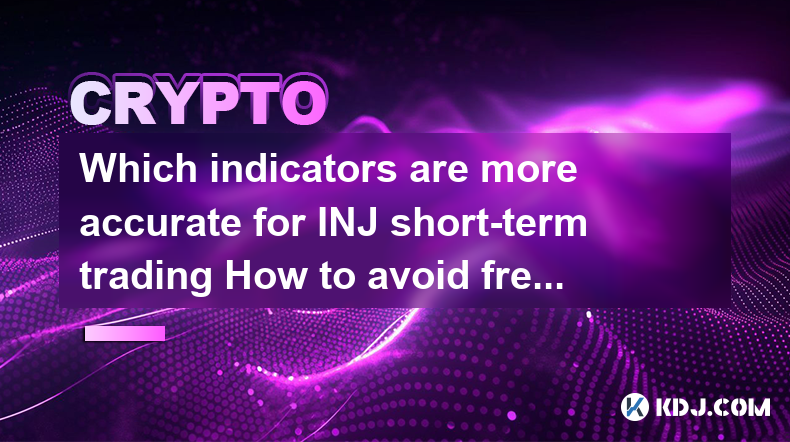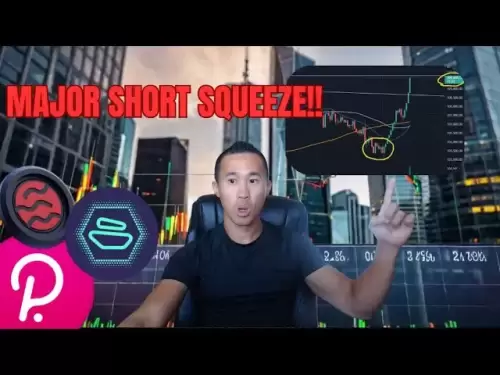-
 Bitcoin
Bitcoin $108,270.9768
2.07% -
 Ethereum
Ethereum $2,489.8066
2.50% -
 Tether USDt
Tether USDt $1.0004
0.01% -
 XRP
XRP $2.2035
0.66% -
 BNB
BNB $661.6608
2.32% -
 Solana
Solana $150.6425
2.13% -
 USDC
USDC $0.9999
-0.01% -
 TRON
TRON $0.2810
0.90% -
 Dogecoin
Dogecoin $0.1645
3.05% -
 Cardano
Cardano $0.5743
4.91% -
 Hyperliquid
Hyperliquid $38.8419
-0.15% -
 Bitcoin Cash
Bitcoin Cash $504.3134
-2.64% -
 Sui
Sui $2.8096
4.35% -
 Chainlink
Chainlink $13.3095
2.21% -
 UNUS SED LEO
UNUS SED LEO $8.9469
0.33% -
 Avalanche
Avalanche $17.9231
3.93% -
 Stellar
Stellar $0.2340
0.74% -
 Toncoin
Toncoin $2.8458
3.21% -
 Shiba Inu
Shiba Inu $0.0...01158
3.47% -
 Litecoin
Litecoin $86.0738
1.94% -
 Hedera
Hedera $0.1507
2.99% -
 Monero
Monero $319.8544
2.31% -
 Polkadot
Polkadot $3.4081
1.95% -
 Dai
Dai $1.0000
0.01% -
 Bitget Token
Bitget Token $4.5645
0.91% -
 Ethena USDe
Ethena USDe $1.0002
0.00% -
 Uniswap
Uniswap $7.2959
5.27% -
 Aave
Aave $272.4623
2.90% -
 Pepe
Pepe $0.0...09680
2.96% -
 Pi
Pi $0.4955
0.78%
Which indicators are more accurate for INJ short-term trading How to avoid frequent operations
For short-term INJ trading, use Moving Averages, RSI, and Bollinger Bands to gauge trends and potential price movements, while setting clear rules to avoid frequent trades.
May 02, 2025 at 10:02 am

Introduction to INJ Short-Term Trading
Injective Protocol (INJ) is a decentralized exchange and layer-2 scaling solution built on Ethereum. For traders looking to engage in short-term trading with INJ, selecting the right indicators and managing trading frequency is crucial. This article will explore the most accurate indicators for short-term INJ trading and provide strategies to avoid frequent operations, which can lead to increased transaction costs and emotional fatigue.
Key Indicators for INJ Short-Term Trading
When trading INJ on a short-term basis, several technical indicators can provide valuable insights. Moving Averages (MA), Relative Strength Index (RSI), and Bollinger Bands are among the most effective tools for gauging market momentum and potential price movements.
Moving Averages (MA)
Moving Averages help smooth out price data to identify the direction of the trend. For short-term trading, using a combination of short-term and long-term moving averages, such as the 5-day and 20-day MAs, can be particularly effective.
- Golden Cross: When the short-term MA crosses above the long-term MA, it signals a potential bullish trend.
- Death Cross: Conversely, when the short-term MA crosses below the long-term MA, it indicates a bearish trend.
Traders can use these signals to enter or exit positions in INJ, depending on their trading strategy.
Relative Strength Index (RSI)
The Relative Strength Index measures the speed and change of price movements. An RSI value above 70 indicates that INJ might be overbought, suggesting a potential price correction. Conversely, an RSI below 30 suggests that INJ might be oversold, indicating a possible price rebound.
Using RSI, traders can identify potential entry and exit points for short-term trades. For instance, if the RSI of INJ moves from overbought to a more neutral level, it might be a good time to sell. Similarly, moving from oversold to neutral could signal a buying opportunity.
Bollinger Bands
Bollinger Bands consist of a middle band being an N-period simple moving average (SMA), an upper band at K times an N-period standard deviation above the middle band, and a lower band at K times an N-period standard deviation below the middle band.
When the price of INJ touches the upper Bollinger Band, it might be overbought, and when it touches the lower band, it might be oversold. Additionally, a narrowing of the bands can indicate a period of low volatility, which often precedes a significant price move.
Strategies to Avoid Frequent Operations
Frequent trading can lead to higher transaction costs and emotional stress. Here are some strategies to help manage trading frequency when dealing with INJ.
Set Clear Trading Rules
Establishing clear trading rules can help reduce the temptation to trade too frequently. These rules should include:
- Entry and Exit Criteria: Define specific conditions under which you will enter or exit a trade. For example, you might decide to buy INJ when the RSI moves from below 30 to above 30 and sell when it moves from above 70 to below 70.
- Stop-Loss and Take-Profit Levels: Set predetermined levels at which you will close a trade to limit losses or lock in profits. For instance, you might set a stop-loss at 5% below your entry price and a take-profit at 10% above.
Use Technical Analysis to Confirm Signals
Relying on a single indicator can lead to false signals and frequent trading. Instead, use multiple indicators to confirm trading signals. For example, if the 5-day MA crosses above the 20-day MA and the RSI moves from below 30 to above 30, it might be a more reliable signal to buy INJ.
Implement a Trading Journal
Keeping a trading journal can help you review your trades and identify patterns that lead to frequent trading. Record the following for each trade:
- Date and Time: When the trade was executed.
- Entry and Exit Prices: The prices at which you entered and exited the trade.
- Reason for Trade: The indicators or signals that prompted the trade.
- Outcome: Whether the trade was profitable or resulted in a loss.
Reviewing your journal regularly can help you refine your trading strategy and reduce unnecessary trades.
Practice Patience and Discipline
Short-term trading requires patience and discipline. Avoid the urge to trade based on emotions or market noise. Stick to your trading plan and only execute trades when your predefined criteria are met.
Practical Steps for Using Indicators in INJ Trading
To effectively use the indicators mentioned above for short-term trading of INJ, follow these practical steps:
- Select a Trading Platform: Choose a platform that supports INJ trading and offers the necessary technical analysis tools. Popular options include Binance, Coinbase Pro, and Kraken.
- Set Up Your Chart: Open the INJ/USD or INJ/BTC chart on your chosen platform. Ensure that you can add multiple indicators to the chart.
- Add Moving Averages: Add the 5-day and 20-day moving averages to your chart. Look for crossovers between these MAs to identify potential trends.
- Add RSI: Add the RSI indicator to your chart with a standard setting of 14 periods. Monitor the RSI for overbought and oversold conditions.
- Add Bollinger Bands: Add Bollinger Bands to your chart with a standard setting of 20 periods and 2 standard deviations. Watch for price touches on the upper and lower bands and band narrowing.
- Monitor and Analyze: Regularly monitor the chart and analyze the signals from your indicators. Only execute trades when multiple indicators confirm a signal.
Frequently Asked Questions
Q: Can I use these indicators for long-term trading of INJ?
A: While the indicators discussed are primarily suited for short-term trading, they can also be adapted for long-term trading. For long-term strategies, consider using longer time frames for moving averages and adjusting the RSI and Bollinger Bands settings accordingly.
Q: How do I know if my trading strategy is effective?
A: To determine the effectiveness of your trading strategy, track your performance over time using a trading journal. Look at your win rate, average profit per trade, and overall profitability. Regularly review and adjust your strategy based on your performance data.
Q: Are there any other indicators I should consider for INJ trading?
A: Yes, other indicators that can be useful for INJ trading include the MACD (Moving Average Convergence Divergence), Stochastic Oscillator, and Volume Weighted Average Price (VWAP). Each of these can provide additional insights into market trends and momentum.
Q: How can I manage the emotional aspect of frequent trading?
A: Managing emotions in trading involves setting clear rules and sticking to them, practicing mindfulness and stress-reduction techniques, and taking breaks from trading when necessary. It's also helpful to have a support network of fellow traders to discuss strategies and experiences.
Disclaimer:info@kdj.com
The information provided is not trading advice. kdj.com does not assume any responsibility for any investments made based on the information provided in this article. Cryptocurrencies are highly volatile and it is highly recommended that you invest with caution after thorough research!
If you believe that the content used on this website infringes your copyright, please contact us immediately (info@kdj.com) and we will delete it promptly.
- XRP Price Targets $2.40 After Descending Channel Breakout: Is $40 Next?
- 2025-07-03 08:50:12
- All Blacks' Loose Forward Conundrum: New Faces and Familiar Battles
- 2025-07-03 08:30:12
- Bitcoin's Wild Ride: Open Interest, Institutional Bets, and Billions on the Line
- 2025-07-03 08:30:12
- Bitcoin, Strategy, & Profit: MSTR's Crypto Playbook and Trump's Digital Diversification
- 2025-07-03 08:50:12
- INJ Price Bull Rally: Smashing Long-Term Resistance – Can It Last?
- 2025-07-03 09:10:12
- Robinhood, OpenAI, and Wallet History: A Tokenized Tale of Intrigue
- 2025-07-03 09:10:12
Related knowledge

How to customize USDT TRC20 mining fees? Flexible adjustment tutorial
Jun 13,2025 at 01:42am
Understanding USDT TRC20 Mining FeesMining fees on the TRON (TRC20) network are essential for processing transactions. Unlike Bitcoin or Ethereum, where miners directly validate transactions, TRON uses a delegated proof-of-stake (DPoS) mechanism. However, users still need to pay bandwidth and energy fees, which are collectively referred to as 'mining fe...

USDT TRC20 transaction is stuck? Solution summary
Jun 14,2025 at 11:15pm
Understanding USDT TRC20 TransactionsWhen users mention that a USDT TRC20 transaction is stuck, they typically refer to a situation where the transfer of Tether (USDT) on the TRON blockchain has not been confirmed for an extended period. This issue may arise due to various reasons such as network congestion, insufficient transaction fees, or wallet-rela...

How to cancel USDT TRC20 unconfirmed transactions? Operation guide
Jun 13,2025 at 11:01pm
Understanding USDT TRC20 Unconfirmed TransactionsWhen dealing with USDT TRC20 transactions, it’s crucial to understand what an unconfirmed transaction means. An unconfirmed transaction is one that has been broadcasted to the blockchain network but hasn’t yet been included in a block. This typically occurs due to low transaction fees or network congestio...

How to check USDT TRC20 balance? Introduction to multiple query methods
Jun 21,2025 at 02:42am
Understanding USDT TRC20 and Its ImportanceUSDT (Tether) is one of the most widely used stablecoins in the cryptocurrency market. It exists on multiple blockchain networks, including TRC20, which operates on the Tron (TRX) network. Checking your USDT TRC20 balance accurately is crucial for users who hold or transact with this asset. Whether you're sendi...

What to do if USDT TRC20 transfers are congested? Speed up trading skills
Jun 13,2025 at 09:56am
Understanding USDT TRC20 Transfer CongestionWhen transferring USDT TRC20, users may occasionally experience delays or congestion. This typically occurs due to network overload on the TRON blockchain, which hosts the TRC20 version of Tether. Unlike the ERC20 variant (which runs on Ethereum), TRC20 transactions are generally faster and cheaper, but during...

The relationship between USDT TRC20 and TRON chain: technical background analysis
Jun 12,2025 at 01:28pm
What is USDT TRC20?USDT TRC20 refers to the Tether (USDT) token issued on the TRON blockchain using the TRC-20 standard. Unlike the more commonly known ERC-20 version of USDT (which runs on Ethereum), the TRC-20 variant leverages the TRON network's infrastructure for faster and cheaper transactions. The emergence of this version came as part of Tether’s...

How to customize USDT TRC20 mining fees? Flexible adjustment tutorial
Jun 13,2025 at 01:42am
Understanding USDT TRC20 Mining FeesMining fees on the TRON (TRC20) network are essential for processing transactions. Unlike Bitcoin or Ethereum, where miners directly validate transactions, TRON uses a delegated proof-of-stake (DPoS) mechanism. However, users still need to pay bandwidth and energy fees, which are collectively referred to as 'mining fe...

USDT TRC20 transaction is stuck? Solution summary
Jun 14,2025 at 11:15pm
Understanding USDT TRC20 TransactionsWhen users mention that a USDT TRC20 transaction is stuck, they typically refer to a situation where the transfer of Tether (USDT) on the TRON blockchain has not been confirmed for an extended period. This issue may arise due to various reasons such as network congestion, insufficient transaction fees, or wallet-rela...

How to cancel USDT TRC20 unconfirmed transactions? Operation guide
Jun 13,2025 at 11:01pm
Understanding USDT TRC20 Unconfirmed TransactionsWhen dealing with USDT TRC20 transactions, it’s crucial to understand what an unconfirmed transaction means. An unconfirmed transaction is one that has been broadcasted to the blockchain network but hasn’t yet been included in a block. This typically occurs due to low transaction fees or network congestio...

How to check USDT TRC20 balance? Introduction to multiple query methods
Jun 21,2025 at 02:42am
Understanding USDT TRC20 and Its ImportanceUSDT (Tether) is one of the most widely used stablecoins in the cryptocurrency market. It exists on multiple blockchain networks, including TRC20, which operates on the Tron (TRX) network. Checking your USDT TRC20 balance accurately is crucial for users who hold or transact with this asset. Whether you're sendi...

What to do if USDT TRC20 transfers are congested? Speed up trading skills
Jun 13,2025 at 09:56am
Understanding USDT TRC20 Transfer CongestionWhen transferring USDT TRC20, users may occasionally experience delays or congestion. This typically occurs due to network overload on the TRON blockchain, which hosts the TRC20 version of Tether. Unlike the ERC20 variant (which runs on Ethereum), TRC20 transactions are generally faster and cheaper, but during...

The relationship between USDT TRC20 and TRON chain: technical background analysis
Jun 12,2025 at 01:28pm
What is USDT TRC20?USDT TRC20 refers to the Tether (USDT) token issued on the TRON blockchain using the TRC-20 standard. Unlike the more commonly known ERC-20 version of USDT (which runs on Ethereum), the TRC-20 variant leverages the TRON network's infrastructure for faster and cheaper transactions. The emergence of this version came as part of Tether’s...
See all articles

























































































